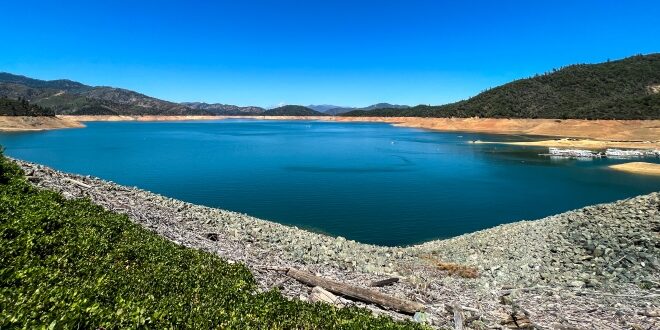The Bureau of Reclamation and U.S. Fish & Wildlife Service have partnered on a project to protect winter-run Chinook salmon in a crucial year of their life cycle at the Livingston Stone National Fish Hatchery (LSNFH).
During years of average or greater precipitation, water quality at LSNFH is generally suitable for salmon production. However, as water temperatures from Shasta Lake are expected to be elevated this year due to the lake’s low level, Reclamation and the Service have installed several temporary water chilling units to cool and stabilize the water supply to the hatchery.
“Winter-run Chinook salmon are particularly vulnerable to drought and warming water temperatures, which are expected to continue this year in California,” said Paul Souza, Regional Director for the Service’s Pacific Southwest Region. “Our hatchery staff and Reclamation are working together to develop immediate and innovative solutions, like the use of chillers, to help this fish survive into the future despite current challenges,” he added.
This third year of extreme drought coincides with the three-year life cycle of winter-run Chinook salmon. Poor survival during the last two drought years makes this a critical year for the population’s survival. In each of the preceding drought years, poor conditions have led to elevated temperature-related mortality in early life stages of these fish in the Sacramento River.
With the help of these chillers, water temperatures will be kept below 56 degrees Fahrenheit for a successful winter-run reproduction. The chilling units have the capability of cooling the water supply up to 20 degrees at 3,000 gallons per minute.
 California Water News Daily Your Source For Water News in California
California Water News Daily Your Source For Water News in California


